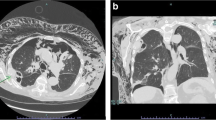Abstract
Objective
Scorpion sting (SS) envenomation is a life threatening emergency in children, though not so severe in adults. Attempt to develop protocol using prazosin and dobutamine and few other drugs to treat SS.
Methods
Children aged 0–13 years with a history of scorpion sting were studied. Clinical features, complications, drug therapy and outcome of the cases for the period 1992–97 (N=186) was collected by the authors and also from the medical records department (RETROSPECTIVE GROUP). Cases treated during 1997–2000 (N=198) as per the protocol were recorded as PROSPECTIVE GROUP. All the cases were observed for at least for 24 hours. Cases coming within 4 hours of a sting were given a dose of Prazosin (30 mic.gm/Kg/dose) and were observed. Those who came after 4 hours & were asymptomatic received only symptomatic treatment. Cases with signs of envenomation received Prazosin every 6 hourly till recovery. Cases having acute pulmonary edema (APE) were treated with dobutamine and sodium nitroprusside drip. Complicated cases were monitored in PICU as per the protocol.
Result
Complications associated with excessive parasympathetic and sympathetic stimulation were observed. Myocarditis was observed due to the toxin and excessive catecholamine, which complicated in left ventricular failure (LVF) and APE. Nearly half of the children with acute myocarditis developed APE. Death was mainly due to myocarditis and APE, with or without encephalopathy. Mortality was high in children who received steroid and antihistaminics outside and who came late (>4 hours).
Conclusion
Complication rate remained almost same in both the groups. There was a significant reduction in overall mortality (P=<0.0155) and in deaths associated with APE (P=<0.0001) after the protocol guided therapy. There was also a reduction in mortality in encephalopathy group though not statistically significant. This treatment protocol and aggressive management of APE reduced the mortality due to SS significantly.
Similar content being viewed by others
References
Ismail M, Shibi A, Abdullah M. Pharmaco kinetics of I125 labeled antivenin to the venom from the scorption Androctonus amoreuxi?Toxicon 1983, 1: 47–56.
Santhanakrishnan BR, Balagopal Raju V. Management of scorption sting in children.Trop Med Hyg 1974; 77: 133–135.
Murthy KRK, Vakil AE, Yeolekar RE. Insulin administration reverses the metabolic and echocardiographic changes in acute Myocarditis induced by Indian red scorption (B tamulus) venom in experimental dogs.Ind Heart J 1990; 42: 35–37.
Biswal N, Murmu Uday C, Mathai Bet al. Management of scropion envenomation.Pediatrics Today 1999; 2(4): 420–426.
Belghith M, Boussarsar M, Haguiga H, Besbes Let al. Efficacy of serotherapy in scorpion sting: A matched pair study.J Clin Toxicol 1999; 37(1): 51–57.
Schenone H, Fontecilla J. Scorpion sting outbreaks in recently constructed urban dwelling inhabitants.Bulletin Chi Leno De Parasitologia 1998; 53(1–2): 35–37.
Miller R, Awarn A, Maxwell BB, Masson DT. Sustained reduction of cardiac impedance and preload in congestive cardiac failure with antihypertensive Prazosin.New Engl J Med 1977; 297: 303–307.
Bawasker HS, Bawasker PH. Scorption sting a review of 121 cases.J Wilderness Medicine 1991; 2: 164–174.
Bawasker HS, Bawasker PH. Scorpion envenoming and the cardiovascular system.Tropical Doctor 1997; 27: 6–9.
Graham RM, Hettinger WA. Drug therapy-Prazosin.New Engl J Med 1979; 300: 232–235.
Elsa AM, Ismail M, Abed, AI Ahaidib MS. Androctonus Crassicauda (Oliver), a dangerous and unduly neglected scorpion—Pharmacological and clinical studies.Toxicon 1994; 32(12): 1599–1618.
El-Amino EO, Elidrissy A, Hamid HS, Sultan OM, Sofer RA. Scorption sting, A management problem.Ann Trop Pediatr 1991; 11: 143–48.
Santhanakrishnan BR, Ranganathan G, Ananthasubramanian P, Raju B. Cardiovascular manifestations of scorption sting in children.Indian Pediatr 1977; 15: 353–356.
Bawasker HS and Bawasker PH. Severe envenoming by Indian Red Scorption (B tamulus). The use of Prazosin therapy.Q J Med 1996; 89: 701–704.
Sunder Raman T, Olithiselvan M, Sethuraman KR, Narayan KA. Socrpion envenomation as a risk factor for development of cardiomyopathy.J Assoc Phys India 1999; 47(11): 1047–1057.
Thaker AK, Lal R, Mishra M. Scorpion bite with multiple cerebral infarcts.Neurol India 2002; 50: 100–102.
Author information
Authors and Affiliations
Corresponding author
Rights and permissions
About this article
Cite this article
Biswal, N., Bashir, R.A., Murmu, U.C. et al. Outcome of scorpion sting envenomation after a protocol guided therapy. Indian J Pediatr 73, 577–582 (2006). https://doi.org/10.1007/BF02759921
Issue Date:
DOI: https://doi.org/10.1007/BF02759921




